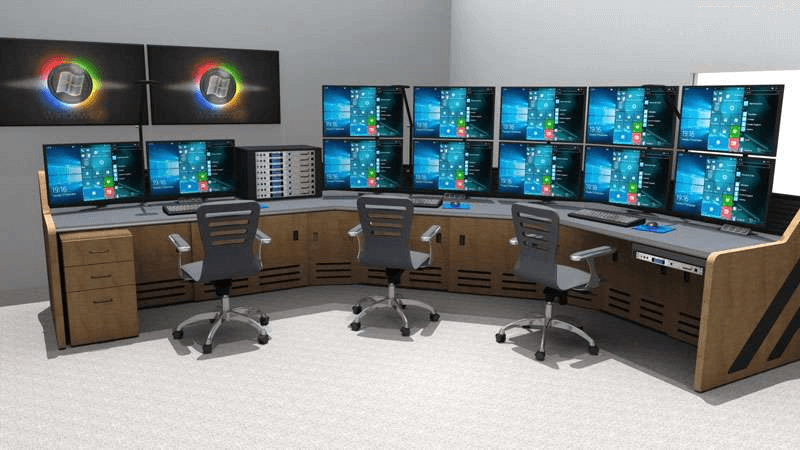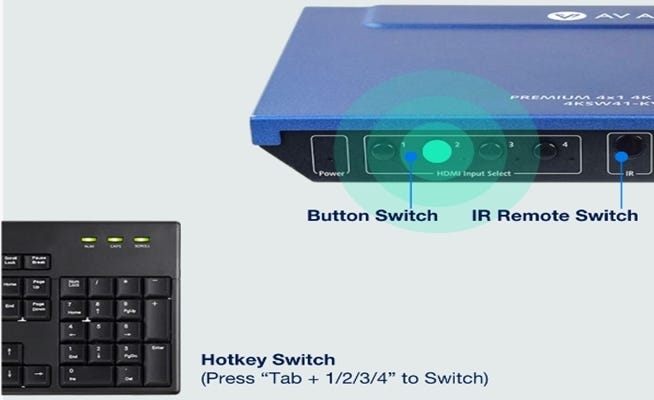views

Top 6 Considerations When Choosing a KVM Switch
A KVM switch provides a quick and cost-effective way to access several PCs with just a single monitor, keyboard and mouse. It can save more space and cost, improve work efficiency and facilitate your life while working from home, especially during this pandemic period. However, there are many types of KVM switches on the market, and choosing the right one can be a little challenging. Here are six major considerations when choosing your KVM switch.
Number of Source Computers and USB Peripheral Devices
The number of ports determines the amount of source computers, servers or other source devices that you can connect to and access from a KVM switch. First of all, you should figure out how many computers you need to access as well as how many USB peripheral devices you need for controlling these computers. For example, you have a work PC and a gaming PC at home, and you need to control them with a set of USB peripheral devices, like keyboard, mouse and gamepad. Then you can choose a KVM switch with two USB-B ports and three USB-A ports, like AV Access 4KSW21-KVM switch. In a data control center, operators usually need one KVM console to control a large number of computers, so a KVM switch with dozens of USB ports is required.
Number of Users for Controlling the Computers
When choosing a KVM switch, you also need to consider how many users you want to be able to access the sources simultaneously. Multi-user KVM switching solutions are available that range from smaller 4-user switches able to handle dozens of servers, to integrated KVM switching systems capable of allowing hundreds of administrators to control thousands of servers. Some KVM over IP solutions are ideal for this kind of scenario where KVM extension and switching is required to achieve multi-user control. They are more flexible, powerful and scalable than traditional KVM switches.

Video Type & Resolution
KVM switches can support a variety of digital and analog video connector types, like HDMI, DisplayPort, DVI, VGA and USB-C. Video support depends on the switch you are using: some supports VGA, DVI, HDMI and DP simultaneously, while others may only support HDMI. Nevertheless, you can also employ video adapters to convert or adapt between different video types.
Another key factor is video resolution, which can vary by device. Some KVM switches support up to 4K UHD at 30hz locally or over IP, like 4KIP100-KVM IP solution. If you have high resolution requirements, consider analog switches like 4KSW41-KVM, as they provide a higher resolution than most digital products.
Single or Multi-Monitor
KVM switches are available in single or multi-monitor configurations, so that you can control and switch between your single-monitor, dual-monitor or even quad-monitor sources. Some KVM switches can also be cascaded for 8-monitor applications. Some KVM-over-IP units allow you to group multiple computer sources and route them to an unlimited number of monitors. Besides, you can view multiple sources within one monitor using a multi-viewer KVM switch, or create a flexible video wall with KVM over IP solution.
Distance Requirements
CatX KVM switches offer longer connection distances over standard KVMs by using CatX user stations. And some KVM over IP solutions allow users to access a server from unlimited distances.
KVM sources can also be extended using KVM extenders. The maximum distance with a Cat5 KVM extender varies; some high-end analog Cat5 extenders allow users to be up to 1,000 feet away from the servers. For the greatest distances, consider fiber KVM extenders, which can extend access over distances of six miles or more.
Switching & Control Method
Many KVM switches have control buttons on their front panel for you to easily switch between computer sources. Some supports IR remote and hotkey switching with the keyboard, like 4KSW41-KVM-Pro, which offers much more convenience. And some KVM over IP solution supports PC or mobile App control.

The above are the six key elements you need to consider before you buy a KVM switch. Knowing your specific needs can help you save money in the long run, because you’ll know exactly what you need and won’t end up buying unnecessary equipment. We hope this article will be helpful to you on choosing the right KVM switch.
Author: Shane
Source: AV Access Blog — Top 6 Considerations When Choosing a KVM Switch












